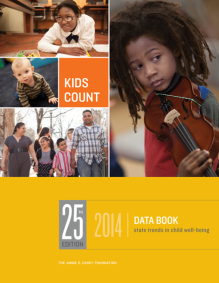When researchers test a new medicine or even a new program design, they often devise a study comparing results between a treatment group and a control group. People in the control group receive no treatment, and forgo any benefits if it is proven to work and avoid any side effects if proven harmful.
A trial is going on regarding healthcare in this country, and right now Oklahoma has put itself in the control group. In this case, being in the control group may not be in our state’s best interest. However, it will provide useful comparisons between our state and states that chose to expand Medicaid.
 In 2012, in the same decision where the Supreme Court ruled the bulk of the Affordable Care Act (ACA) was constitutional, the court also ruled that the federal government could not force the states to accept the Medicaid expansion. The Medicaid expansion was intended to provide healthcare coverage for Americans whose income fell below 133% of the poverty level.
In 2012, in the same decision where the Supreme Court ruled the bulk of the Affordable Care Act (ACA) was constitutional, the court also ruled that the federal government could not force the states to accept the Medicaid expansion. The Medicaid expansion was intended to provide healthcare coverage for Americans whose income fell below 133% of the poverty level.
While the court ruled the federal government could not force states to expand Medicaid eligibility, it did keep the option alive for states willing to accept federal money for the expansion. In essence, the final decision on expanding Medicaid fell to the individual states.
However, declining the expansion does not leave states in the same situation they were in before the ACA was passed. In 2014, all states will begin to see a decline in the Disproportionate Share Hospital (DSH) payments the federal government grants to states to fund care for indigent patients.
States used DSH payments to help hospitals deal with unpaid medical bills, and DSH payments are decreasing because Medicaid was supposed to fill the gap. So it is important to understand that declining additional Medicaid funds leaves many hospitals at a financial disadvantage. (more…)
Read Full Post »
 The Annie E. Casey Foundation has been tracking child well-being in their annual KIDS COUNT Data Book for the past 25 years. The data in the 2014 report continues to measure indicators in four domains: 1) Economic Well-being, 2) Education, 3) Health, and 4) Family and Community. The figures are based on data as recent as 2012.
The Annie E. Casey Foundation has been tracking child well-being in their annual KIDS COUNT Data Book for the past 25 years. The data in the 2014 report continues to measure indicators in four domains: 1) Economic Well-being, 2) Education, 3) Health, and 4) Family and Community. The figures are based on data as recent as 2012. Their estimates show the food insecurity rate in the U.S. is 15.9%, down from 16.4% in last year’s report. This means 48,966,000 Americans lack the resources to consistently afford enough nutritious food to live active, healthy lives.
Their estimates show the food insecurity rate in the U.S. is 15.9%, down from 16.4% in last year’s report. This means 48,966,000 Americans lack the resources to consistently afford enough nutritious food to live active, healthy lives. In 2012, in the
In 2012, in the 
 In Oklahoma, it is estimated 49% of households live in a persistent state of financial insecurity, with no little or no savings to cover emergencies. This is up from last year’s estimate of 43.8% of Oklahomans who were considered “liquid asset poor.” Poor showings in areas related to income, assets, healthcare and education contributed to Oklahoma’s overall rank of 31, compared to other states.
In Oklahoma, it is estimated 49% of households live in a persistent state of financial insecurity, with no little or no savings to cover emergencies. This is up from last year’s estimate of 43.8% of Oklahomans who were considered “liquid asset poor.” Poor showings in areas related to income, assets, healthcare and education contributed to Oklahoma’s overall rank of 31, compared to other states.


 And we’re not alone in our concern, either. Researchers at the University of Chicago have found that preschool students do, in fact, miss a lot of school. Their recent report,
And we’re not alone in our concern, either. Researchers at the University of Chicago have found that preschool students do, in fact, miss a lot of school. Their recent report,  This is what
This is what 
